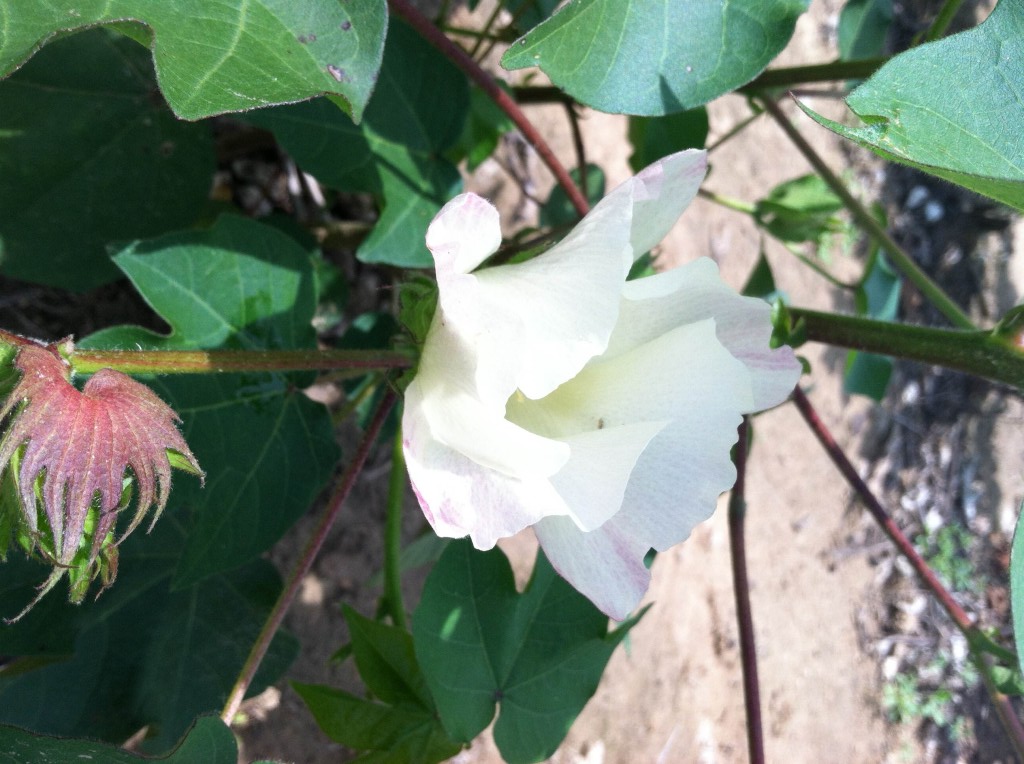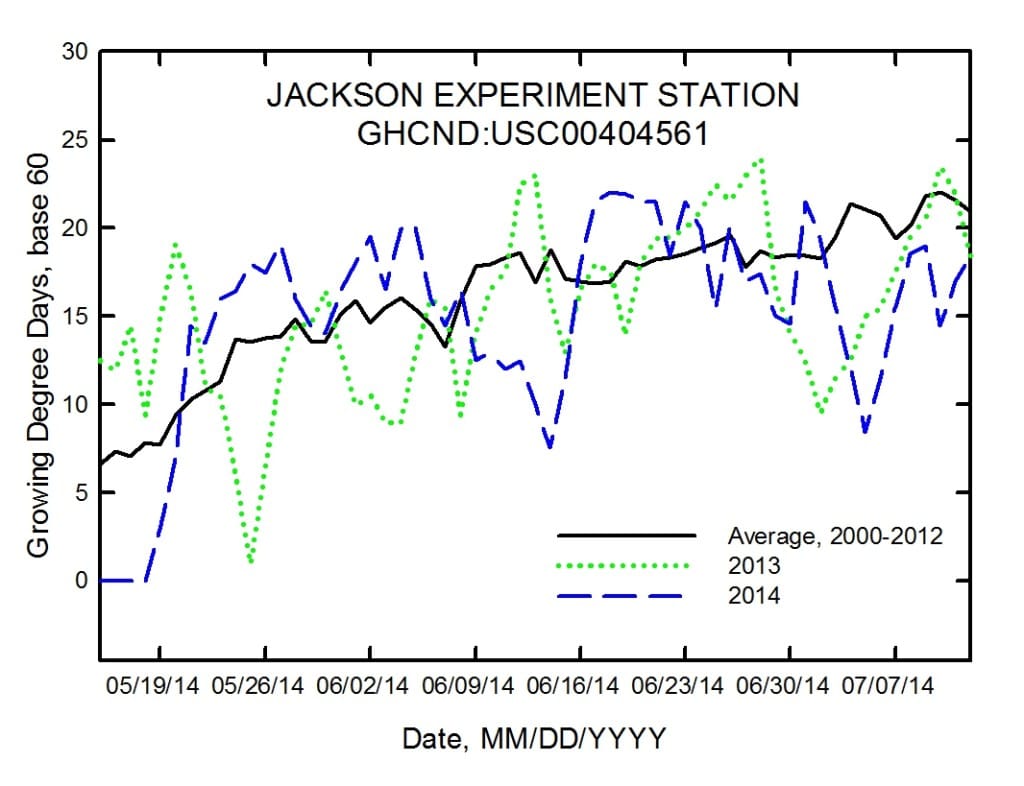 Blooms are beginning to become easier to find in West TN cotton fields. It appears first bloom (the period in which 50% of plants have begun flowering) has arrived roughly 7-14 days behind schedule. Our plots here and around Jackson have definitely jumped in the past few days with warmer temperatures and moderately clear skies. Still, the 7 day forecast looks more like May. With that in mind, I’ve collected and graphed the growing degree days (no cut-off temp, base 60) in Jackson, TN for the past 14 years. Relatively speaking, temperatures will vary only slightly from county to county so this data will do a pretty good job of describing the heat units under which your West TN cotton crop has developed.
Blooms are beginning to become easier to find in West TN cotton fields. It appears first bloom (the period in which 50% of plants have begun flowering) has arrived roughly 7-14 days behind schedule. Our plots here and around Jackson have definitely jumped in the past few days with warmer temperatures and moderately clear skies. Still, the 7 day forecast looks more like May. With that in mind, I’ve collected and graphed the growing degree days (no cut-off temp, base 60) in Jackson, TN for the past 14 years. Relatively speaking, temperatures will vary only slightly from county to county so this data will do a pretty good job of describing the heat units under which your West TN cotton crop has developed.

There are a few things I’d like to point out here. First, during the period between May 15th and July 12th we have accumulated 884 DD60s. This is almost 75 DD60s shy of the average noted from 2000-2012 (956 DD60s). Actually, we are slightly behind last year! During the 2013 growing season, 903 DD60s were accumulated during this period. These measurements definitely indicate we are behind, but they do not completely describe this growing season. Two additional parameters contributing to our late start are cloudy weather and wet soils.
So what does this mean? Earliness is going to be crucial this year. Below are a few guidelines for managing for earliness:
- Those first position, low-node fruiting bodies are going to be very important because we may not receive enough DD60s to make a ‘top crop.’ Aim for 80% square retention, place an emphasis on scouting, and when thresholds are met, make the insecticide application as soon as possible.
- There is mixed data on plant growth regulators and earliness, but it is clear that a moderately-statured crop will be defoliated more efficiently which can lead to a more timely and more efficient harvest.
- If at all possible, run hoods. One example- mid-season, over-the-top applications of Ignite to Widestrike cotton (especially if mixed with Dual or Warrant) can delay maturity.
- Finally, don’t over apply inputs. Most have already applied their N fertilizer, but remember the University of Tennessee recommendations top out at 80 lb N per acre. For those who have cotton under irrigation, the general rule of thumb for irrigation termination at this latitude is NAWF=5 + 350 DD60s OR NAWF=5 + roughly 18 days.
The good news? Managing for earliness will pay even if we get a warm September (fingers crossed).

